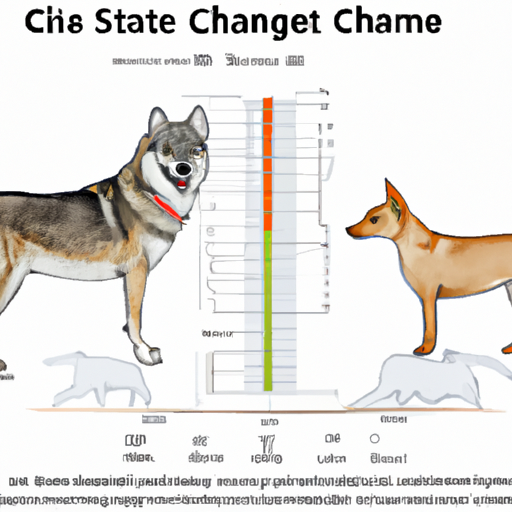Understanding the Size of Coyotes
You might have seen them in your backyard, or perhaps on a casual hike, coyotes are creatures that have learned to coexist with us in both urban and rural environments. But how big are they compared to our beloved canine companions?
Coyotes are smaller than most people imagine. On average, an adult coyote weighs between 20-50 pounds, stands about 25 inches tall at the shoulder, and measures approximately 41 inches long from nose to tail. This makes them significantly smaller than many common dog breeds like Labrador Retrievers or German Shepherds, but larger than small breeds like Terriers or Chihuahuas.
Here’s a simple comparison table to help you visualize the size difference:
| Species | Average Height (inches) | Average Weight (lbs) | Average Length (inches) |
|---|---|---|---|
| Coyote | 25 | 20-50 | 41 |
| Labrador Retriever | 24.5 | 55-80 | 40-42 |
| German Shepherd | 26 | 50-90 | 36-42 |
| Terrier | 10-16 | 6-20 | 15-17 |
| Chihuahua | 5-8 | 2-6 | 6-9 |
Comparing Coyotes and Dogs Physically
Now that you have a sense of their size, let’s compare coyotes and dogs physically. Both coyotes and dogs share a common ancestry, resulting in similar physical characteristics. They both have digitigrade legs (meaning they walk on their toes), erect triangular ears, and bushy tails. But there are also differences. Coyotes have a more narrow and elongated snout compared to most dogs, and their tail is usually carried pointing down while dogs can carry their tails in various positions.
The Behavior Comparison
While size and physical appearance are important, understanding the behavioral differences between coyotes and dogs can give you a more comprehensive comparison. Coyotes are wild animals. They’re highly adaptable, intelligent, and have a keen sense of survival. Dogs, on the other hand, have been domesticated for thousands of years and most have lost their wild instincts.
- Survival Instincts: Coyotes are known for their cunning and survival skills. They can adapt to various environments, from deserts to urban cities.
- Social Behavior: Dogs are inherently social animals. They thrive in a family setting and require interaction. Coyotes, on the other hand, can be social but are often solitary.
- Diet: Dogs have a diet controlled by their caregivers, often consisting of commercially prepared dog food. Coyotes, being wild animals, are opportunistic and will eat whatever is available.
Living Harmoniously with Coyotes
As our urban areas continue to expand, interactions between humans, dogs, and coyotes are becoming increasingly common. It’s essential for you, as a caregiver, to understand how to live harmoniously with these wild neighbors.
- Keep your dogs on a leash when outside, especially during the early morning and evening hours when coyotes are most active.
- Do not leave food outside as it can attract coyotes.
- If you encounter a coyote, do not run. Instead, make yourself appear larger and make loud noises to scare it away.
Frequently Asked Questions (FAQs)
Q: Are Coyotes dangerous to dogs?
A: While coyotes are generally shy and avoid human interaction, they can pose a risk to small dogs if they feel threatened or if they’re looking for food.
Q: Can coyotes and dogs breed?
A: Yes, coyotes and dogs can breed resulting in a hybrid known as a “coydog”, but it’s quite rare in the wild.
Q: How can I keep my dog safe from coyotes?
A: Keeping your dog on a leash, especially during dawn and dusk when coyotes are most active, and not leaving food outside are effective ways to keep your dog safe.
Remember, coyotes are an integral part of our ecosystem. Understanding them better allows us to coexist peacefully. After all, they were here first!



